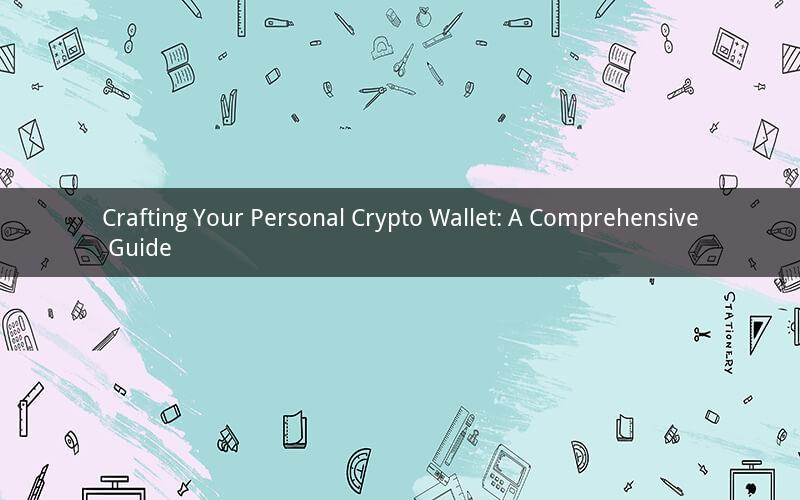
Building your own crypto wallet is a crucial step in the world of cryptocurrency. It allows you to have complete control over your digital assets, ensuring security and privacy. In this article, we will delve into the process of creating a crypto wallet, exploring various types of wallets and providing essential tips for maintaining your digital wealth.
I. Understanding the Basics of Crypto Wallets
Before we dive into the details of building your crypto wallet, it is important to understand the fundamental concepts. A crypto wallet is a digital tool that stores, sends, and receives cryptocurrencies. It acts as a virtual safe, safeguarding your digital assets from theft and unauthorized access.
There are primarily two types of crypto wallets: hot wallets and cold wallets. Hot wallets are connected to the internet and are convenient for everyday transactions, while cold wallets are offline and offer enhanced security for storing large amounts of cryptocurrency.
II. Types of Crypto Wallets
1. Software Wallets
Software wallets are digital wallets that can be installed on your computer or smartphone. They offer ease of use and are suitable for managing smaller amounts of cryptocurrency. Here are some popular software wallets:
- Mobile wallets: These wallets are available for iOS and Android devices, allowing you to access your cryptocurrency on the go.
- Desktop wallets: These wallets are installed on your computer and provide a more secure environment for storing your digital assets.
2. Hardware Wallets
Hardware wallets are physical devices designed specifically for storing cryptocurrencies. They offer a high level of security, as they are not connected to the internet and are resistant to hacking attempts. Some well-known hardware wallets include:
- Ledger Nano S: A popular hardware wallet that supports a wide range of cryptocurrencies.
- Trezor Model T: Another reputable hardware wallet that offers a touchscreen interface and advanced security features.
3. Paper Wallets
Paper wallets are a type of cold wallet that consists of a printed piece of paper containing your private and public keys. While they are highly secure, they can be easily damaged or lost. It is essential to keep them in a safe and secure location.
III. How to Build Your Own Crypto Wallet
1. Choose a Wallet Type
Based on your needs and preferences, select the type of wallet that suits you best. Consider factors such as security, convenience, and the number of cryptocurrencies you wish to store.
2. Download and Install the Wallet
For software wallets, visit the official website of the wallet provider and download the appropriate version for your device. Follow the installation instructions to set up your wallet.
3. Create a Wallet
Once the wallet is installed, you will need to create a new wallet. This process usually involves generating a new private and public key pair. Make sure to keep your private key safe, as it is the key to accessing your digital assets.
4. Set Up Security Features
Enable security features such as two-factor authentication (2FA) and backup options. These features will enhance the protection of your wallet and prevent unauthorized access.
5. Fund Your Wallet
Transfer cryptocurrency from your exchange or another wallet to your newly created wallet. Ensure that you use the correct address to avoid losing your funds.
IV. Tips for Maintaining Your Crypto Wallet
1. Keep Your Private Key Safe
Your private key is the most critical component of your wallet. Never share it with anyone and keep it in a secure location, such as a password-protected device or a physical safe.
2. Regularly Update Your Wallet
Stay informed about the latest security updates and keep your wallet software up to date. This will ensure that your wallet remains secure against potential vulnerabilities.
3. Backup Your Wallet
Create regular backups of your wallet, especially if you are using a software wallet. This will help you recover your digital assets in case of data loss or hardware failure.
4. Be Wary of Phishing Attacks
Be cautious of phishing attacks and scams. Never click on suspicious links or provide your private key to anyone claiming to be a wallet provider.
5. Educate Yourself
Stay informed about the latest developments in the cryptocurrency world. Understanding the risks and best practices will help you make informed decisions regarding your digital assets.
V. FAQs
1. Q: Can I use the same private key for multiple wallets?
A: No, it is crucial to use a unique private key for each wallet to prevent unauthorized access to your digital assets.
2. Q: How long does it take to create a crypto wallet?
A: The process of creating a crypto wallet can vary depending on the type of wallet and your familiarity with the technology. Generally, it takes a few minutes to set up a software wallet.
3. Q: Can I recover my crypto wallet if I lose my private key?
A: Unfortunately, losing your private key means losing access to your digital assets. It is essential to keep your private key safe and secure.
4. Q: Are hardware wallets more secure than software wallets?
A: Yes, hardware wallets are generally considered more secure than software wallets, as they are not connected to the internet and are resistant to hacking attempts.
5. Q: Can I use a crypto wallet to store fiat currencies?
A: No, crypto wallets are designed specifically for storing and managing cryptocurrencies. They cannot be used to store fiat currencies.
In conclusion, building your own crypto wallet is a crucial step in managing your digital assets. By understanding the basics of crypto wallets, selecting the right type of wallet, and following best practices for security and maintenance, you can ensure the safety and privacy of your cryptocurrency investments.